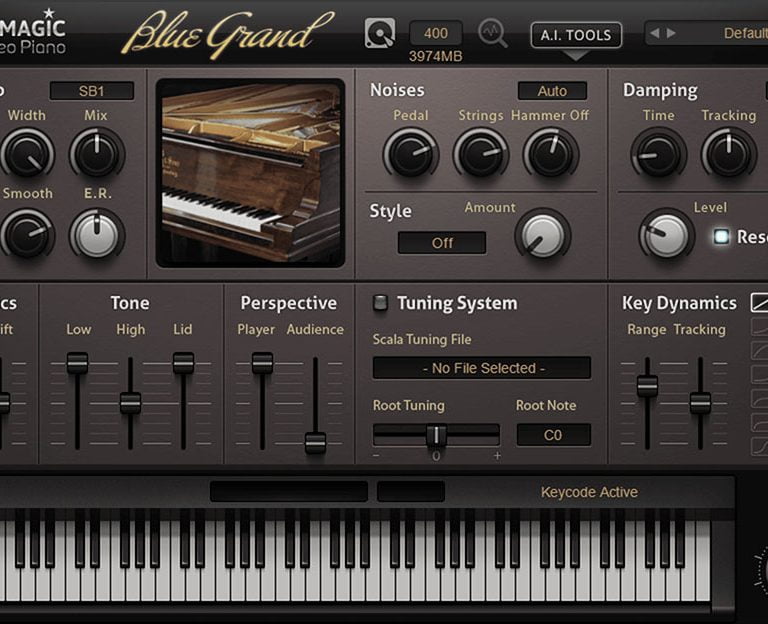Easy piano songs for beginners include classics like “Twinkle Twinkle Little Star” and “Mary Had a Little Lamb.” These songs are great for learning basic piano techniques and building confidence in playing.
Their straightforward tunes offer a strong basis for novices to begin experimenting on the piano. Songs like “Happy Birthday” and “Jingle Bells” are very fun to play and suitable for beginners. These simple piano tunes can help you improve your abilities and have fun while doing so, regardless of your level of experience.
Now let’s get started and learn some Easy Piano Songs for Beginners.
Why Learning Easy Piano Songs Is Important for Beginners
For beginners, learning simple piano tunes is essential because it gives them a strong foundation and boosts their confidence. These pieces give novices a starting point to hone their abilities, pick up correct technique, and enhance their musicality, putting them on the path to success on the piano.
For beginners in particular, learning to play the piano may be a gratifying and demanding experience. Starting with simple tunes is one of the most important parts of learning the piano. We’ll talk about the advantages of beginning with simple songs for beginners in this blog post.
Importance Of Starting with Easy Songs
It’s important that novices start with simple tunes when they take up the piano. This is the reason why:
Advantages Of Learning Easy Songs
For novices, learning easy piano songs has various advantages:
- Establishing a Firm Basis: Beginning with simple piano pieces enables novices to establish a firm base of essential abilities and methods. These songs give novices the chance to concentrate on honing fundamental abilities like hand placement and finger dexterity because they frequently have straightforward chord progressions, simple rhythms, and restricted hand coordination.
- Improving Sight-Reading Capabilities: Beginners can get better at sight-reading by playing simple piano tunes. Beginners can improve their ability to read sheet music, recognize notes, and decipher musical symbols by practicing easier tunes. When students work on increasingly difficult pieces, this ability will come in very handy.
- Building a Musical Ear: Novices can educate their musical ear by learning easy tunes. Through repeated exposure to simple songs, novices can acquire the ability to identify various melodies, intervals, and harmonies, so strengthening their pitch and musicality. Consequently, this will enhance their capacity to perform increasingly complex compositions in the future.
- Increasing Memory and Concentration: Learning simple piano tunes by heart is less intimidating for novices than learning intricate pieces. Beginners can enhance their memory and focus by consistently practicing and learning easy songs. This will be crucial as they advance in their piano journey to tackle increasingly difficult tunes.
Increasing Self-Belief and Drive
For beginners, learning easy piano songs increases drive and self-assurance. As follows:
1.pleasant Sense of Achievement: Novices will feel a pleasant sense of accomplishment when they master simple piano songs. They will be inspired to keep practicing and advance in their piano studies by this accomplishment.
2.Enhanced Confidence: Novices can develop a greater sense of confidence in their playing by beginning with songs that are doable. This self-assurance will enable them to take on more difficult pieces since they will have faith in their abilities to succeed in overcoming challenges.
Three.Pleasure and Laughter: Beginners can take pleasure in and laugh out loud while playing the piano with these simple tunes. For novices, being able to play well-known songs may be incredibly fulfilling and joyful, which inspires them to keep learning and exploring.
In conclusion, novices should prioritize learning simple piano songs. It maintains motivation levels high, strengthens foundations, improves musical abilities, and gives confidence. Beginning with easier tunes, novices can have a joyful and rewarding experience learning to play the piano.
Essential Techniques for Learning Easy Piano Songs for Beginner
Starting with simple piano melodies is a terrific way to build confidence and develop essential abilities. Learning to play the piano can be an exciting and rewarding experience. We will look at the key strategies in this section that will help you succeed when you start your piano playing journey.
Positioning Fingers and Hands
Effective piano playing requires appropriate hand and finger placement. Learning this method will help you avoid strain and injuries in the long run in addition to increasing your accuracy. Here are some important pointers to remember:
- Rather than tensing or flattening the keys, place your fingers in a relaxed, curved form on them.
- To ensure that your hands are parallel to the keyboard and to allow for fluid motions, keep your wrists loose and slightly lifted.
- Align your thumbs so that they are ready to press the keys: they should sit somewhat lower than the other fingers.
- To build muscle memory and strengthen your fingers, practice playing scales and other basic exercises.
Basic Music Theory for Beginners
Playing the piano requires an understanding of basic music theory, even though it may appear difficult. The following basic ideas can assist you in understanding and interpreting music:
- Acquaint oneself with the musical alphabet, which consists of the letters A through G. This is necessary in order to understand notes.
- Acquaint yourself with the idea of octaves, which denote the separation in pitch between two notes of the same name.
- Recognize the different note values that make up rhythm, such as whole, half, quarter, and eighth notes.
- Learn about the various time signatures that determine the amount of beats in a measure, such as 4/4 and 3/4.
Introduction To Reading Sheet Music
For any pianist, being able to read sheet music is a vital ability. It offers you countless opportunities for studying and creating in addition to enabling you to perform a wide variety of music. To get you started, consider these fundamental steps:
1.Learn about the grand staff, which is made up of the bass and treble clefs, which stand for different notes.
2.Start by familiarizing yourself with the notes’ positions on the staff by learning the landmark notes, C, D, E, F, and G.
Three.Acquire knowledge of the fundamental musical symbols that enhance your playing, including as flats, sharps, and dynamic markings.
4.As your skills improve, start practicing easy tunes and melodies and progressively increase the difficulty.
You may play easy piano melodies with confidence and delight if you can master four fundamental skills: reading sheet music, basic music theory, and finger and hand positioning. As you improve, don’t forget to practice frequently and have patience with yourself. You’ll advance more quickly the more you play!
Top 5 Easy Piano Songs for Beginners to Master
For novices, picking up the piano may be a very fulfilling experience. The top five simple piano songs for beginners to learn are listed here to aid you on your musical journey. These well-known songs also feature straightforward melodies and chords that can help you hone your piano playing abilities. Now let’s get started and thoroughly examine each song.
“Twinkle Twinkle Little Star” is the first song.
“Twinkle Twinkle Little Star” is a timeless selection of simple piano music for novices. This classic nursery rhyme simply needs you to use your right hand to play a simple melody, making it an excellent choice for novices. Let’s go over how to play the tune step by step:
1.The first thing to do is to place your right thumb on middle C, the white key that is near the center of the keyboard.
2.Play the following notes in order with your right hand: C, C, G, G, A, A, G.
Three.For the song’s second line, follow the same pattern: F, F, E, E, D, D, C.
4.Lastly, use the following notes to play the song’s final line: G, G, F, F, E, E, D, D, C.
You’ll be able to play “Twinkle Twinkle Little Star” on the piano in no time by following these easy steps!
Second song: “Mary Had a Little Lamb.”
“Mary Had a Little Lamb” is a fantastic option if you’re seeking for another simple piano tune to learn. This well-known nursery rhyme includes a repeating structure and a straightforward melody. You can analyze the melody and chords as follows:
1.To begin, place your right thumb on note E, the white key that is a little bit to the right of middle C.
2.Using your right hand, play the notes E, D, C, D, E, E, E in order.
Three.Use your left hand to play the following chords for the chorus or bridge section: C, C, C, C, D, D, C, C. Continue this chord progression through the chorus.
You will be able to play “Mary Had a Little Lamb” on the piano with ease if you practice these easy instructions.
Third song: “Happy Birthday”
“Happy Birthday” is a great option for novices because it’s a song that everyone is familiar with. Compared to the earlier songs, this one is a little bit more difficult, but don’t worry—we’ll walk you through it. The song’s structure is broken down here, along with some pointers for playing with both hands:
1.The verse and the chorus are the song’s two main components. The rhythm of the chorus is 4-4-5, whilst the verse has a 3-3-2 beat.
2.Beginning with the note C, play the melody with your right hand in the following order: C, C, D, C, F, E.
Three.You can accompany the melody using the chords C, F, and G played with the left hand. Try with several inversions and voicings until you get the sound you like.
You can wow your friends and family on their special day by playing “Happy Birthday” on the piano with confidence after some practice.
“Jingle Bells” is song #4.
Beginners should learn “Jingle Bells” as it is a holiday staple. The pleasant tune of this song is ideal for honing finger coordination. Here’s a synopsis of the song and a comprehensive guide to playing the melody:
1.The song “Jingle Bells” features a straightforward verse and chorus structure, with a 4–4 time signature.
2.First, press the note G with your right thumb; it’s the white key toward the center of the keyboard.
3.Using your right hand, play the following notes: G, G, G, G, F, E, D, C, D, E, E, E, D, E, D, G.
4.You are welcome to add changes and embellishments to make the song more engaging. For instance, you may insert arpeggios or trills into specific melody sections.
You can add the Christmas spirit to your piano playing and perform “Jingle Bells” like a pro with a little practice and imagination.
Song 5: Elvis Presley’s “can’t Help Falling In Love”
The Elvis Presley song “Can’t Help Falling in Love” is a great way to incorporate some romance into your repertoire. This song is still attainable for beginners even though it is a little bit more difficult than the previous ones. Here is a breakdown of the melody and accompaniment methods along with an examination of the chord progression:
Three chords make up the majority of the song: C, Em, and G.
1.C, G, Am, Em, F, C, and G
And using your right hand to play the melody:
1.C, F, D, G, F, D, E, and G
Your listeners will be enthralled by the lovely tune of “Can’t Help Falling in Love.”
You’ll establish a strong foundation and boost your self-confidence in your piano playing abilities by learning these top five simple piano tunes. Keep in mind that practice makes perfect, so continue setting aside time to improve your abilities and relish the process of becoming a proficient pianist.
Resources And Practice Tips for Beginner Piano Players

Starting off as a budding pianist may be thrilling and difficult at the same time. Fortunately, you may find a wealth of information and practice advice to support you on your musical journey. This guide can help you, whether you’re looking for recommended books and sheet music, online tutorials, or practice techniques. Now that you have these great tools and materials at your disposal, let’s get started on mastering simple piano songs.
Video lectures and online tutorials
Online tutorials and video classes have become very popular and easily available for learning the piano. Numerous websites and YouTube channels provide tutorials that are suitable for beginners, allowing you to advance your talents at your own speed. The following are a few well-known internet sources:
1.Online Piano Lessons: This website provides thorough instruction for novices, encompassing everything from fundamental methods to performing well-known tunes.
2.Synthesis is a piano instructional YouTube channel that offers step-by-step directions for a variety of simple piano melodies.
Three.Playground Sessions: This website makes learning entertaining and interesting by fusing popular music with interactive piano instruction.
Practice Techniques for Learning Easy Piano Songs
To become proficient at playing the piano, one must practice. The following are some useful tactics to have in mind:
- Establish Specific Goals: Whether it’s getting better at a certain area of a song or increasing your speed and accuracy, decide what you want to accomplish each practice session.
- Break It Down: If a piece appears too difficult, divide it up into manageable chunks and concentrate on becoming an expert in each one before assembling the whole thing.
- Make Use of Repetition: To increase muscle memory and playing smoothness, repeat difficult passages.
- Use a metronome: To strengthen your sense of rhythm and time, practice with a metronome.
- Take Breaks: To avoid physical and mental exhaustion during practice sessions, plan brief breaks.
Suggested Readings and Sheet Music for Novices
The correct books and sheet music can have a big impact on your educational process. The following are some excellent resources for beginning pianists:
Book/Sheet Music Summary
Karen Berger’s “The Complete Idiot’s Guide to Piano Exercises” is an extensive manual that offers exercises to enhance finger strength, dexterity, and coordination.
“First 50 Popular Songs You Should Play on the Piano” is an assortment of well-known songs that are simple enough for novices to learn and are excellent for increasing enjoyment and self-assurance.
“John Thompson’s Easiest Piano Course” is a course that teaches novices the fundamentals of playing the piano, such as note reading, appropriate hand position, and easy tunes.
You’ll have a wide variety of songs and exercises to practice with these suggested books and sheet music, which will help you advance gradually as you learn to play the piano.
Commonly Asked Questions About Simple Piano Songs That Are Easy For Novices To Learn
Which Easy Piano Songs Are Good for Novices to Learn?
Easy piano songs for beginners to learn include “Happy Birthday,” “Twinkle Twinkle Little Star,” and “Fur Elise.” These tunes have straightforward melodies and are excellent for honing fundamental piano skills.
How Easily Can Novices Learn To Play Piano Songs?
Using online tutorials or beginner piano books, breaking down songs into smaller portions, practicing frequently, and starting with simple melodies are all effective ways for beginners to learn how to play the piano.
Are There Any Piano Pieces Appropriate for Complete Novices?
Yes, some piano tunes are easy enough for a complete beginner to learn, like “Jingle Bells,” “Mary Had a Little Lamb,” and “Row, Row, Row Your Boat.” These tunes feature recurring themes.
Is It Possible for Novices to Learn How to Play Simple Piano Songs?
Yes, by starting with simplified versions and following beginner piano instructions, novices can learn to perform popular songs on the piano. Through perseverance and commitment, kids can progressively advance to performing increasingly intricate arrangements.
In summary
All things considered, beginners who are just beginning their musical journey will find these simple piano tunes ideal. These songs offer a strong foundation for beginning pianists to hone their abilities because of their straightforward chord progressions and melodies. Beginners can gradually advance to more difficult pieces by honing their technique, building confidence, and rehearsing these songs on a regular basis.
So, take advantage of these simple songs and start your musical journey right now!
For read our more blogs, Click Here




